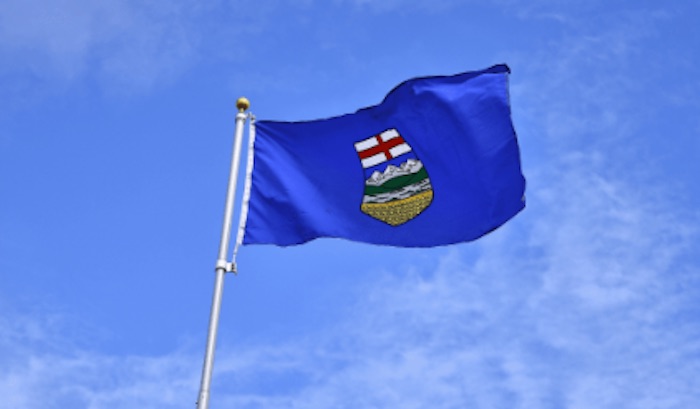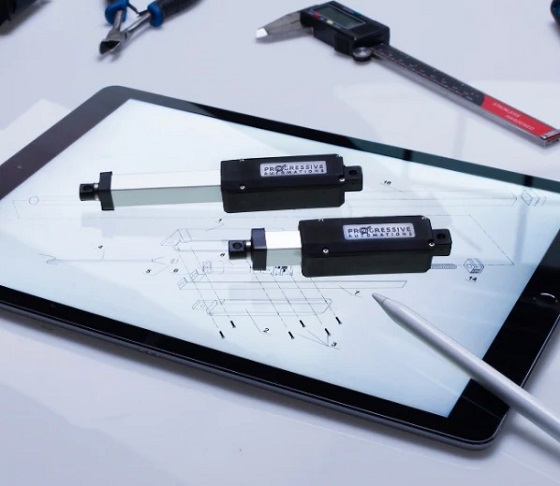Alberta
Alberta announces 11.6 billion surplus

Strong year-end positions Alberta for stability
A solid end to 2022-23 secures Alberta’s long-term financial outlook and provides stability against future economic uncertainty.
Alberta ended the fiscal year with an $11.6-billion surplus, exceeding the Budget 2022 projected surplus by $11.1 billion. In 2022-23, the province paid down $13.3 billion in debt, eliminating an estimated $260 million in debt servicing costs annually and reducing the overall debt burden on Albertans.
The province’s strong financial situation also resulted in the market value of the Alberta Heritage Savings Trust Fund growing by $2.5 billion to $21.2 billion. The Heritage Fund’s year-over-year growth was primarily due to actions taken by the Alberta government to retain $1.25 billion in net investment income from 2021-22 and deposit $753 million into the fund.
Growing the Heritage Fund benefits current and future generations of Albertans by ensuring the province is well equipped to handle future uncertainty.
In March of this year, Alberta’s government made legislative changes to ensure the fund continues to grow to support Albertans now and in the future. These changes allow the government to retain all investment income within the Heritage Fund instead of it being transferred to general revenue.
“The 2022-23 year-end report is a very positive one. We promised to keep our economy moving forward and Alberta is reaping the benefits. Albertans can rest easy knowing that Alberta’s prosperity today means more stability tomorrow as we continue to pay down debt and save for the future.”
Alberta’s government remains committed to responsible financial management. For the current and subsequent years, Alberta’s new legislated fiscal framework will continue to address Alberta’s unique economic and revenue volatility. The framework requires government to put at least half of any surplus toward debt repayment, with the remainder going toward additional debt repayment, the Heritage Fund or one-time initiatives that do not permanently increase government spending.
Revenue
Revenue in 2022-23 was $76.1 billion, $13.5 billion more than estimated in Budget 2022, including:
- $25.2 billion in non-renewable resource revenue, $11.4 billion more than estimated in Budget 2022.
- $26.5 billion in tax revenue, $3.5 billion higher than estimated in Budget 2022. This included:
- $8.2 billion in corporate income tax, $4.1 billion more than estimated in Budget 2022.
- $13.9 billion in personal income tax, $543 million more than estimated in Budget 2022.
At the time the Budget 2022 forecast was developed, the global economy was experiencing significant uncertainty related to COVID-19, global growth and energy demand. Budget 2022 was based on a West Texas Intermediate (WTI) forecast of US$70 per barrel in 2022-23.
Oil prices surged last year due to many global factors. WTI reached US$120 per barrel in June 2022 and averaged US$89.69 for the 2022-23 fiscal year, a large reason for the increase in resource and corporate income tax revenue.
Expense
Expense in 2022-23 was $64.5 billion, $2.4 billion more than estimated in Budget 2022, including:
- $25.2 billion in health expense to expand capacity and for higher costs in response to Albertans’ evolving health-care needs.
- Investments of $8.9 billion and $6.1 billion in K-12 and post-secondary education, respectively, providing quality learning for Alberta’s youth and building on the province’s world-class post-secondary environment.
Among other factors, the overall increase from Budget 2022 was due to:
- A $2.2-billion increase in operating expense, mainly for health, increased compensation costs from settled agreements, electricity rebates and other affordability measures, and the cost of selling oil.
- A $300-million increase in COVID-19 recovery costs.
- A $167-million increase in debt servicing costs, mainly due to the impact of higher interest rates.
Affordability
In response to rising living costs, Alberta’s government introduced a series of affordability measures in 2022-23 that helped slow inflation and make life more affordable for Albertans. In 2022-23, the government provided $2.9 billion in affordability supports, including:
- $1.1 billion for the fuel tax relief program, funded through a reduction in revenue.
- $304 million for indexation of the personal income tax system to inflation retroactive to the 2022 tax year, funded through a reduction in revenue.
- $644 million for electricity rebates.
- $441 million for affordability payments to eligible seniors, families with children and vulnerable Albertans on core benefits programs.
- $51 million for indexation of benefit payments to inflation (Alberta Seniors Benefit, Assured Income for the Severely Handicapped, Income Support, Persons with Developmental Disabilities).
To further reduce the cost burden on Albertans, Alberta’s government recently extended the pause on the collection of the provincial fuel tax, saving Albertans 13 cents on every litre of gasoline and diesel until the end of 2023.
Alberta
Red Deer Justice Centre Grand Opening: Building access to justice for Albertans

The new Red Deer Justice Centre will help Albertans resolve their legal matters faster.
Albertans deserve to have access to a fair, accessible and transparent justice system. Modernizing Alberta’s courthouse infrastructure will help make sure Alberta’s justice system runs efficiently and meets the needs of the province’s growing population.
Alberta’s government has invested $191 million to build the new Red Deer Justice Centre, increasing the number of courtrooms from eight to 12, allowing more cases to be heard at one time.
“Modern, accessible courthouses and streamlined services not only strengthen our justice
system – they build safer, stronger communities across the province. Investing in the new Red Deer Justice Centre is vital to helping our justice system operate more efficiently, and will give people in Red Deer and across central Alberta better access to justice.”

Government of Alberta and Judiciary representatives with special guests at the Red Deer Justice Centre plaque unveiling event April 22, 2025.
On March 3, all court services in Red Deer began operating out of the new justice centre. The new justice centre has 12 courtrooms fully built and equipped with video-conference equipment to allow witnesses to attend remotely if they cannot travel, and vulnerable witnesses to testify from outside the courtroom.
The new justice centre also has spaces for people taking alternative approaches to the traditional courtroom trial process, with the three new suites for judicial dispute resolution services, a specific suite for other dispute resolution services, such as family mediation and civil mediation, and a new Indigenous courtroom with dedicated venting for smudging purposes.
“We are very excited about this new courthouse for central Alberta. Investing in the places where people seek justice shows respect for the rights of all Albertans. The Red Deer Justice Centre fills a significant infrastructure need for this rapidly growing part of the province. It is also an important symbol of the rule of law, meaning that none of us are above the law, and there is an independent judiciary to decide disputes. This is essential for a healthy functioning democracy.”
“Public safety and access to justice go hand in hand. With this investment in the new Red Deer Justice Centre, Alberta’s government is ensuring that communities are safer, legal matters are resolved more efficiently and all Albertans get the support they need.”
“This state-of-the-art facility will serve the people of Red Deer and surrounding communities for generations. Our team at Infrastructure is incredibly proud of the work done to plan, design and build this project. I want to thank everyone, at all levels, who helped make this project a reality.”
Budget 2025 is meeting the challenge faced by Alberta with continued investments in education and health, lower taxes for families and a focus on the economy.

Quick facts
- The new Red Deer Justice Centre is 312,000 sq ft (29,000 m2). (The old courthouse is 98,780 sq ft (9,177 m2)).
- The approved project funding for the Red Deer Justice Centre is about $191 million.
Alberta
Made in Alberta! Province makes it easier to support local products with Buy Local program

Show your Alberta side. Buy Local. |
When the going gets tough, Albertans stick together. That’s why Alberta’s government is launching a new campaign to benefit hard-working Albertans.
Global uncertainty is threatening the livelihoods of hard-working Alberta farmers, ranchers, processors and their families. The ‘Buy Local’ campaign, recently launched by Alberta’s government, encourages consumers to eat, drink and buy local to show our unified support for the province’s agriculture and food industry.
The government’s ‘Buy Local’ campaign encourages consumers to buy products from Alberta’s hard-working farmers, ranchers and food processors that produce safe, nutritious food for Albertans, Canadians and the world.
“It’s time to let these hard-working Albertans know we have their back. Now, more than ever, we need to shop local and buy made-in-Alberta products. The next time you are grocery shopping or go out for dinner or a drink with your friends or family, support local to demonstrate your Alberta pride. We are pleased tariffs don’t impact the ag industry right now and will keep advocating for our ag industry.”
Alberta’s government supports consumer choice. We are providing tools to help folks easily identify Alberta- and Canadian-made foods and products. Choosing local products keeps Albertans’ hard-earned dollars in our province. Whether it is farm-fresh vegetables, potatoes, honey, craft beer, frozen food or our world-renowned beef, Alberta has an abundance of fresh foods produced right on our doorstep.
Quick facts
- This summer, Albertans can support local at more than 150 farmers’ markets across the province and meet the folks who make, bake and grow our food.
- In March 2023, the Alberta government launched the ‘Made in Alberta’ voluntary food and beverage labelling program to support local agriculture and food sectors.
- Through direct connections with processors, the program has created the momentum to continue expanding consumer awareness about the ‘Made in Alberta’ label to help shoppers quickly identify foods and beverages produced in our province.
- Made in Alberta product catalogue website
Related information
-

 Business2 days ago
Business2 days agoIs Government Inflation Reporting Accurate?
-

 2025 Federal Election2 days ago
2025 Federal Election2 days agoStudy links B.C.’s drug policies to more overdoses, but researchers urge caution
-

 2025 Federal Election2 days ago
2025 Federal Election2 days agoPolls say Canadians will give Trump what he wants, a Carney victory.
-

 2025 Federal Election2 days ago
2025 Federal Election2 days agoPoilievre’s Conservatives promise to repeal policy allowing male criminals in female jails
-

 2025 Federal Election2 days ago
2025 Federal Election2 days agoCarney Liberals pledge to follow ‘gender-based goals analysis’ in all government policy
-

 2025 Federal Election2 days ago
2025 Federal Election2 days agoTrump Has Driven Canadians Crazy. This Is How Crazy.
-

 Entertainment1 day ago
Entertainment1 day agoPedro Pascal launches attack on J.K. Rowling over biological sex views
-

 2025 Federal Election1 day ago
2025 Federal Election1 day agoPoilievre Campaigning To Build A Canadian Economic Fortress





